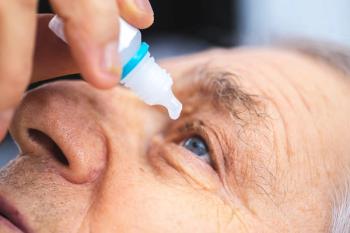
Study supports MiSight 1 day soft contact lenses efficacy in slowing myopia progression
The study evaluated 13 teenagers and young adults who had high myopia (−6.50 to −9.25 D).
A recent study published by Ophthalmic and Physiological Optics reinforced prescribing confidence in CooperVision’s MiSight 1 day soft contact lenses for higher prescriptions.1 Findings from the study demonstrated the lenses’ ability to deliver consistent retinal defocus in a more prolate-shaped eye, commonly associated with higher myopia. According to a news release, these findings are consistent with the lenses’ optical profile that has shown to slow myopia progression in age-appropriate children in powers to correct low and moderate levels of myopia.
“This study provides compelling evidence that MiSight® 1 day delivers consistent defocus from the treatment zones across a wide range of myopia levels,” said Paul Chamberlain, senior director of research programs at CooperVision and one of the study’s authors, in the release. “The research marks the latest data in a years-long collaboration to overcome instrumentation limitations and develop a precise, advanced technique for measuring treatment impact.”
The study, “Accommodative Behavior and Retinal Defocus in Highly Myopic Eyes Fitted with a Dual Focus Myopia Control Contact Lens,” was led by Dawn Meyer, OD, of Indiana University School of Optometry and funded by CooperVision.1,2
The study evaluated 13 teenagers and young adults who had high myopia (−6.50 to −9.25 D).1 Right eye monochromatic aberrations (850 nm) were measured during binocular viewing using a validated pyramidal wavefront sensor. For binocular viewing, an infrared beam splitter was placed into the measurement path, where a 90-degree rotated measurement axis was aligned to the eye’s primary line of sight. Fixation targets were thenlocated at 6 test distances (target vergences (TV) of −0.25 and −1.00 to −5.00 D in 1.00 D steps), with each coaxial to the measurement axis of the aberrometer or displaced ±10° or ±20° to the right or left at a TV of −1.00 D.2
The study found that accommodative behavior remained stable fitted with single vision and dual focus lenses.1 “This is particularly relevant as higher levels of myopia are often associated with larger accommodative lags,” the release stated.
MiSight 1 day lenses also demonstrated significant optical defocus across varying view distances and retinal regions. Retinal defocus within the annual treatment zone was measured as approximately −2.00 D at the foveal center, 10° nasal and temporal and 20° nasal and reduced to −1.90 (0.57) D at 20° temporal.1 These findings support the slowing of myopia progression by maintaining consistent levels of myopia defocus, according to the release.
“In highly myopic eyes, dual focus (DF) myopia control lenses introduced lower amounts of myopic retinal defocus at close viewing distances compared to the eyes of children and young adults with lower levels of myopia,” the study authors stated. “This lower level of myopic defocus is believed to be due to the increased accommodative lags and more prolate retinas common in highly myopic eyes. However, the +2.00 D power in the treatment optical zone of the DF contact lens generated a combined effect of reducing hyperopic retinal defocus while introducing myopic defocus into the retinal image, relative to SV correction, even in highly myopic eyes.”
References:
Study published in peer-reviewed journal shows MiSight 1 day provides desirable myopic defocus for higher prescriptions. News release. CooperVision. February 18, 2025. Accessed February 18, 2025.
Meyer D, Gantes-Nuñez J, Rickert M, et al. Accommodative behavior and retinal defocus in highly myopia eyes fitted with a dual focus myopia control contact lens. Ophthalmic Physiol Opt. 2025;45:189.
https://doi.org/10.1111/opo.13420
Newsletter
Want more insights like this? Subscribe to Optometry Times and get clinical pearls and practice tips delivered straight to your inbox.








































